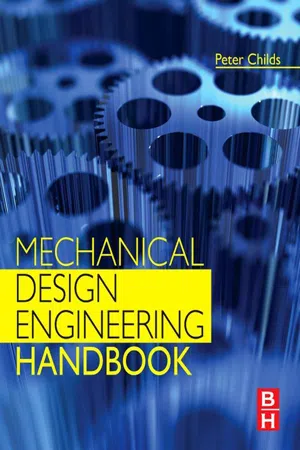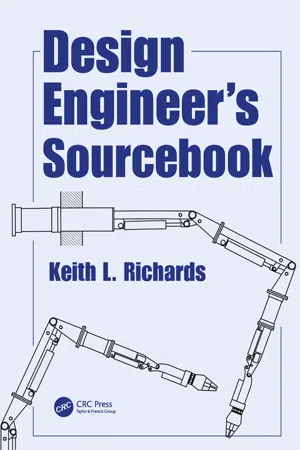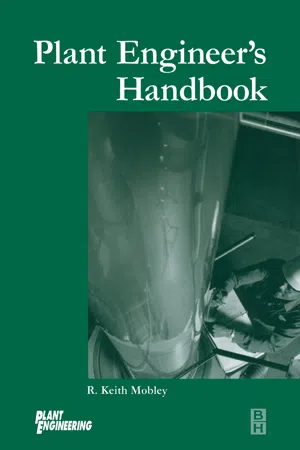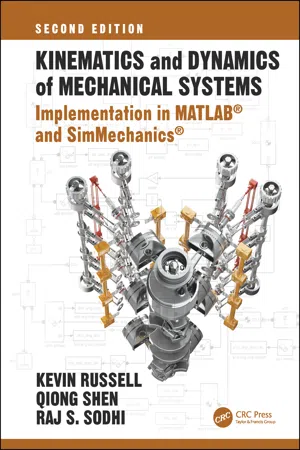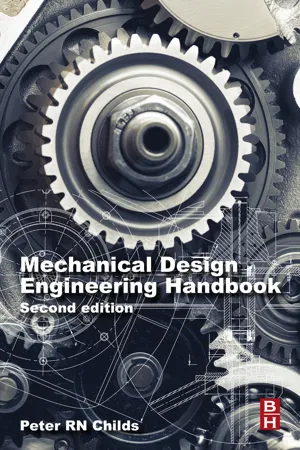Technology & Engineering
Gears
Gears are mechanical components with interlocking teeth that transmit power and motion between shafts. They are used to change the speed, torque, and direction of a power source, such as in vehicles, machinery, and clocks. Gears come in various types, including spur, helical, bevel, and worm gears, each designed for specific applications.
Written by Perlego with AI-assistance
6 Key excerpts on "Gears"
- eBook - ePub
Advanced Gear Manufacturing and Finishing
Classical and Modern Processes
- Kapil Gupta, Neelesh Kumar Jain, Rolf Laubscher(Authors)
- 2017(Publication Date)
- Academic Press(Publisher)
Chapter 1 Introduction to Gear Engineering Abstract Gears are basic mechanical components used to transmit motion and/or power and are responsible for the smooth functioning of a significant number of machines, instruments, and equipments employed in most major industrial, scientific, and domestic applications. The purpose of this chapter is to present a basic introduction to Gears, their use, and manufacture. The chapter commences with an introduction to Gears along with a brief history. A classification scheme is then presented based on the gear-shaft axis orientation and corresponding gear types with their unique features and applications. The applicable gear terminology and nomenclature along with the most important gear materials, their properties, and application areas are presented next. The chapter is concluded with a brief introduction into gear manufacture comprising both conventional and advanced types along with the relevant finishing processes. Keywords Bevel gear; involute; gear hobbing; noncircular gear; spline; spur gear; worm wheel 1.1 Introduction and History of Gears 1.1.1 Introduction A gear is basically a toothed wheel that works in tandem with another gear (or Gears) to transmit power and/or motion to change speed and/or direction of motion. Dudley defined a gear as “a geometric shape that has teeth uniformly spaced around the circumference and is made to mesh its teeth with another gear” [1]. Slipping is a major problem during transmission of motion and power between two shafts by rope or belt drive and consequently may affect the precision and efficiency of the system adversely. This slipping phenomenon is largely avoided by means of gear drives. The compact layout, flexibility, high efficiency, and reliability are the most important features that make Gears and gear drives the first choice in many applications - eBook - ePub
- Peter Childs(Author)
- 2013(Publication Date)
- Butterworth-Heinemann(Publisher)
Chapter 8Gears
Abstract
Gears are toothed cylindrical wheels used for transmitting mechanical power from one rotating shaft to another. Several types of Gears are commonly used and are available as stock items from original equipment suppliers worldwide. This chapter introduces various types of Gears and gear transmission and details the design, specification, and selection of spur Gears, in particular, based on the consideration of failure due to bending using the Lewis equation.Chapter OutlineKeywords
Bevel; Epicyclic; Gears; Helical; Lewis equation; Module; Procedure; Selection; Spur; Systems; Tooth; Wheel; Worm8.1 Introduction 8.2 Construction of Gear Tooth Profiles 8.3 Gear Trains 8.3.1 Manually Shifted Automotive Transmissions 8.3.2 Epicyclic Gear Trains 8.4 Tooth Systems 8.5 Force Analysis 8.5.1 Introduction to Gear Stresses 8.5.2 Bending Stresses 8.6 Simple Gear Selection Procedure 8.7 Conclusions References Further Reading Nomenclature8.1 Introduction
Many power producing machines, or prime movers, such as IC engines, industrial gas turbine engines (GTEs), and electric motors produce power in the form of rotary motion. The operating characteristics of prime movers vary according to their type and size. Typical examples are illustrated in Figure 8.1 for an IC engine, an alternating current electric motor and a series wound direct current electric motor. These characteristics may not match those of a given application. For example, the IC engine gives little torque at the low speeds associated with starting. It is for this reason that a car engine requires a clutch to decouple the engine from the load during starting and a gearbox to transform the characteristic of the prime mover to match that of the load.Figure 8.1 - eBook - ePub
- K. L. Richards(Author)
- 2017(Publication Date)
- CRC Press(Publisher)
36Geared Systems
36.1 Introduction
Rotary transmission between shafts is accomplished using different methods:- Pulleys, using v-belts, timing belts, chains
- Hydraulic pumps and motors, servo-electro motors
- Gearing
This third group will be discussed in this chapter. Very simplistically, a gearbox is a device for mechanically transmitting power from one shaft to another and either maintaining, increasing, or decreasing the speed N of the second shaft to the first. Because of the speed change, there will be a change in the torque T.The gearbox designer’s prime task is to design a system that will provide the required characteristics to match the demands of the drive system, whether it be a metal-cutting machine tool drive, automotive gearbox, winch drive, etc.Gears are wheels that mesh with each other through interlocking teeth. Rotation of one wheel will cause the rotation of the other, albeit in the opposite direction, without any slip between them. There are a number of gear teeth designs; the most common is the cycloidal and involute form. The fundamental basis of the involute form is there is no sliding between the tooth surfaces, the action is purely rolling, and, hence, there is minimum damage between the teeth, provided the tooth size is adequate for the power being transmitted and there is adequate lubrication in the gearbox.36.2 Types of Gears
There are many different types of Gears, and the classification or identification depends largely on how the Gears are used. The most common combination is where the two shafts are parallel with each other; here, the Gears will be either spur or helical and the shafts will rotate in the opposite direction to each other. When the two shafts are not parallel with each other, the connecting Gears can be either skew or spiral or even bevel Gears. - eBook - ePub
- R. Keith Mobley(Author)
- 2001(Publication Date)
- Butterworth-Heinemann(Publisher)
57 Gears and Gear DrivesR Keith Mobley The Plant Performance GroupContents57.1. Introduction 5/103157.2. Types of Gears and their characteristics57.2.1. Gear types57.2.2. Efficiencies57.3. Gear teeth57.3.1. Involute profile57.3.2. Pressure angle57.4. Measurements and dimensions57.4.1. Gear tooth elements57.4.2. Linear and circular measurements57.5. Gear drives and speed reducers57.1 Introduction
A gear is a disc or wheel with teeth around its periphery – either on the inside edge (i.e., internal gear) or on the outside edge (i.e., external gear). A gear is used for providing a positive means of power transmission. This transmission is effected by the teeth on one gear meshing with the teeth on another gear or rack (i.e., straight-line gear). Meshing teeth formed with special cutters provide a much more compact drive than either belts or chain drives and can operate at higher speeds and power.57.2 Types of Gears and their characteristics
There are several different types of Gears used in industry, but the spur gear is the most commonly used. Many are complex in design and manufacture, and several have evolved directly from the spur gear, which is commonly referred to as the basic gear. Because gear design is extremely complex and the field of specialized gearing is beyond the scope of this text, only a general description and explanation of principles are given. The commonly used Gears are discussed sufficiently to provide the millwright or mechanic with the basic information necessary to perform installation and maintenance work. - eBook - ePub
Kinematics and Dynamics of Mechanical Systems, Second Edition
Implementation in MATLAB® and SimMechanics®
- Kevin Russell, John Q. Shen, Raj S. Sodhi(Authors)
- 2018(Publication Date)
- CRC Press(Publisher)
8Design and Kinematic Analysis of Gears
CONCEPT OVERVIEW
In this chapter, the reader will gain a central understanding regarding- Purposes, designs, and functions of spur, planetary, rack and pinion, helical, bevel , and worm Gears
- Criteria for optimal gear operation and its relationship with gear design variables and design equations
- Equations and solution methods for the kinematics of spur, planetary, rack and pinion, helical, bevel , and worm Gears
8.1 Introduction
Gears are mechanical components used to transmit motion from one shaft to another. In Chapters 3 and 4 , Gears have been introduced in the planar five-bar mechanism. By including a gear pair, as illustrated in Figure 3.4 , or a gear train (three or more Gears), as illustrated in Figure 4.13 , to interconnect the driving links of this mechanism, the rotation of link a 0 −a 1 is transmitted to link b 0 −b 1 .A simple design to transmit motion between shafts can include cylinders, where friction maintains the rolling contact between the cylinders (Figure 8.1a ). With this design, as long as the contact between the cylinders is pure rolling (e.g., no slip), the velocity relationships given in Equation 8.1 hold true. As a result of the friction force being the limiting factor for the torque capacity of rolling cylinders, motion transmission through rolling cylinders is limited to low-torque applications in practice.Replacing the rolling cylinders with Gears (Figure 8.1b ) maintains the velocity relationships in Equation 8.1 while substantially increasing torque capacity, since the teeth in the driving gear (also called the pinion ) interface or mesh with the teeth of the driven gear.* With Gears, torque capacity is limited to the bending strength of the gear teeth (as opposed to contact friction in rolling cylinders) [1 ]. The ratio of the driving and driven gear angular velocities (in Equation 8.1 ) is called the velocity ratio (VR - eBook - ePub
- Peter Childs(Author)
- 2018(Publication Date)
- Butterworth-Heinemann(Publisher)
20 Mechanisms Abstract The human race has been inventing and developing mechanisms for as long as our history indicates. The knowledge arising from the operation of these can be leveraged in designing variants, or developments, for modern applications. This chapter serves to introduce a range of mechanisms, some of which will have already been introduced or be familiar, in order to provide an indication of available designs and inspiration for the development of new ones. Keywords Machine; Gizmo; Gadget; Mechanism; Device; Invention; Mechanical Chapter Outline 20.1 Introduction 20.2 Levers 20.3 Pulleys 20.4 Linkages 20.5 Gears, belts and chains 20.6 Rotating and linear motion conversion 20.7 Brakes and clutches 20.8 Time metering 20.9 Miscellaneous devices 20.10 Conclusions References Websites Nomenclature Generally, preferred SI units have been stated. a length (m) c length (m) d pitch diameter (mm) F force (N) F applied applied force (N) F e effort (N) F load load (N) L length (m) m module (mm) M moment (N m) n rotational speed. (rpm) n arm rotational speed of arm (rpm) n sun rotational speed of sun gear (rpm) N number of teeth, number of discs N R number of teeth in ring gear N S number of teeth in sun gear p pressure (N/m 2) r radius (m) R radius (m) T torque (N m) μ coefficient of friction θ angle (rad) ω angular velocity (rad/s) 20.1 Introduction The human race has been inventing and developing mechanisms for as long as our history indicates. The knowledge arising from the operation of these can be leveraged in designing variants, or developments, for modern applications. This chapter serves to introduce a range of mechanisms, some of which will have already been introduced or be familiar, in order to provide an indication of available designs and inspiration for the development of new ones. The term machine element is commonly used for the component parts of a machine which cannot readily be disassembled into simpler components
Index pages curate the most relevant extracts from our library of academic textbooks. They’ve been created using an in-house natural language model (NLM), each adding context and meaning to key research topics.
Explore more topic indexes
Explore more topic indexes
1 of 6
Explore more topic indexes
1 of 4

